Related Research Articles

Octavio Paz Lozano was a Mexican poet and diplomat. For his body of work, he was awarded the 1977 Jerusalem Prize, the 1981 Miguel de Cervantes Prize, the 1982 Neustadt International Prize for Literature, and the 1990 Nobel Prize in Literature.

Jorge Mario Pedro Vargas Llosa, 1st Marquess of Vargas Llosa, more commonly known as Mario Vargas Llosa, is a Peruvian novelist, journalist, essayist and former politician. Vargas Llosa is one of Latin America's most significant novelists and essayists and one of the leading writers of his generation. Some critics consider him to have had a larger international impact and worldwide audience than any other writer of the Latin American Boom. In 2010, he won the Nobel Prize in Literature, "for his cartography of structures of power and his trenchant images of the individual's resistance, revolt, and defeat." He also won the 1967 Rómulo Gallegos Prize, the 1986 Prince of Asturias Award, the 1994 Miguel de Cervantes Prize, the 1995 Jerusalem Prize, the 2012 Carlos Fuentes International Prize, and the 2018 Pablo Neruda Order of Artistic and Cultural Merit. In 2021, he was elected to the Académie française.

José Julián Martí Pérez was a Cuban nationalist, poet, philosopher, essayist, journalist, translator, professor, and publisher, who is considered a Cuban national hero because of his role in the liberation of his country from Spain. He was also an important figure in Latin American literature. He was very politically active and is considered an important philosopher and political theorist. Through his writings and political activity, he became a symbol of Cuba's bid for independence from the Spanish Empire in the 19th century, and is referred to as the "Apostle of Cuban Independence". From adolescence on, he dedicated his life to the promotion of liberty, political independence for Cuba, and intellectual independence for all Spanish Americans; his death was used as a cry for Cuban independence from Spain by both the Cuban revolutionaries and those Cubans previously reluctant to start a revolt.

Juan Nepomuceno Carlos Pérez Rulfo Vizcaíno, best known as Juan Rulfo, was a Mexican writer, screenwriter, and photographer. He is best known for two literary works, the 1955 novel Pedro Páramo, and the collection of short stories El Llano en llamas (1953). This collection includes the popular tale "¡Diles que no me maten!".
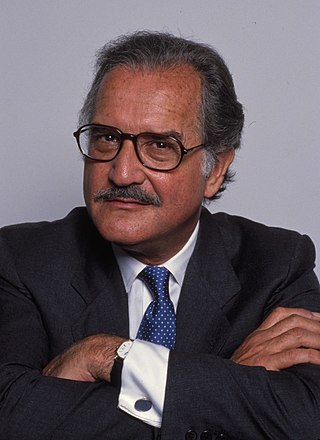
Carlos Fuentes Macías was a Mexican novelist and essayist. Among his works are The Death of Artemio Cruz (1962), Aura (1962), Terra Nostra (1975), The Old Gringo (1985) and Christopher Unborn (1987). In his obituary, The New York Times described Fuentes as "one of the most admired writers in the Spanish-speaking world" and an important influence on the Latin American Boom, the "explosion of Latin American literature in the 1960s and '70s", while The Guardian called him "Mexico's most celebrated novelist". His many literary honors include the Miguel de Cervantes Prize as well as Mexico's highest award, the Belisario Domínguez Medal of Honor (1999). He was often named as a likely candidate for the Nobel Prize in Literature, though he never won.

Félix Rubén García Sarmiento, known as Rubén Darío, was a Nicaraguan poet who initiated the Spanish-language literary movement known as modernismo (modernism) that flourished at the end of the 19th century. Darío had a great and lasting influence on 20th-century Spanish-language literature and journalism.

Mexican literature stands as one of the most prolific and influential within Spanish-language literary traditions, alongside those of Spain and Argentina. This rich and diverse tradition spans centuries, encompassing a wide array of genres, themes, and voices that reflect the complexities of Mexican society and culture. From ancient indigenous myths to contemporary urban narratives, Mexican literature serves as a poignant reflection of the nation's essence, inviting readers to explore its rich history, diverse culture, and collective aspirations.

Latin American literature consists of the oral and written literature of Latin America in several languages, particularly in Spanish, Portuguese, and the indigenous languages of Latin America. This article is only about Latin American literature from countries where Spanish is the native/official language. Even though these 18 countries share a language, each one has its unique literary traditions although they often overlap with those of other countries. Here only the most general literary trends are discussed. Latin American literature rose to particular prominence globally during the second half of the 20th century, largely due to the international success of the style known as magical realism. As such, the region's literature is often associated solely with this style, with the 20th century literary movement known as Latin American Boom, and with its most famous exponent, Gabriel García Márquez. Latin American literature has a rich and complex tradition of literary production that dates back many centuries.
El Universal may refer to the following Spanish-language publications:
The Latin American Boom was a literary movement of the 1960s and 1970s when the work of a group of relatively young Latin American novelists became widely circulated in Europe and throughout the world. The Boom is most closely associated with Julio Cortázar of Argentina, Carlos Fuentes of Mexico, Mario Vargas Llosa of Peru, and Gabriel García Márquez of Colombia. Influenced by European and North American Modernism, but also by the Latin American Vanguardia movement, these writers challenged the established conventions of Latin American literature. Their work is experimental and, owing to the political climate of the Latin America of the 1960s, also very political. "It is no exaggeration", critic Gerald Martin writes, "to state that if the Southern continent was known for two things above all others in the 1960s, these were, first and foremost, the Cuban Revolution and its impact both on Latin America and the Third World generally, and secondly, the Boom in Latin American fiction, whose rise and fall coincided with the rise and fall of liberal perceptions of Cuba between 1959 and 1971."
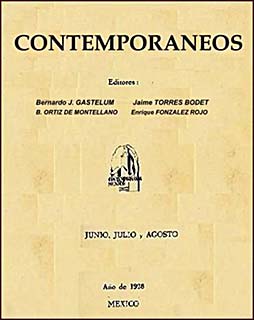
Los Contemporáneos can refer to a Mexican modernist group, active in the late 1920s and early 1930s, as well as to the literary magazine which served as the group's mouthpiece and artistic vehicle from 1928 to 1931. In a way, they were opposed to stridentism.

Manuel Ramos Otero was a Puerto Rican writer. He is widely considered to be the most important openly gay twentieth-century Puerto Rican writer who wrote in Spanish, and his work was often controversial due to its sexual and political content. Ramos Otero died in San Juan, Puerto Rico, from complications of AIDS.

Letras Libres is a Spanish-language monthly literary magazine published in Mexico and Spain.
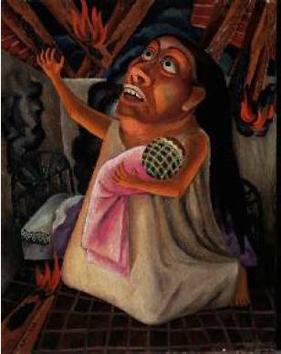
Gabriel Fernández Ledesma was a Mexican painter, printmaker, sculptor, graphic artist, writer and teacher. He began his career working with artist Roberto Montenegro then moved into publishing and education. His work was recognized with two Guggenheim Fellowships, the José Guadalupe Posada medal and membership in the Salón de la Plástica Mexicana.

Gabriel José García Márquez was a Colombian writer and journalist, known affectionately as Gabo or Gabito throughout Latin America. Considered one of the most significant authors of the 20th century, particularly in the Spanish language, he was awarded the 1972 Neustadt International Prize for Literature and the 1982 Nobel Prize in Literature for One Hundred Years of Solitude. He pursued a self-directed education that resulted in leaving law school for a career in journalism. From early on he showed no inhibitions in his criticism of Colombian and foreign politics. In 1958, he married Mercedes Barcha Pardo; they had two sons, Rodrigo and Gonzalo. It is a lesser known fact that Gabriel had a daughter with Mexican writer Susana Cato, part of an extramarital affair. They named her Indira, and she took her mother's last name.
The following is a timeline of the history of the city of Mexico City, Mexico.
Rubén Gallo is the Walter S. Carpenter Jr. Professor in Language, Literature, and Civilization of Spain at Princeton University, specializing in modern and contemporary Spanish America. He also serves as Professor of Spanish and Portuguese Languages and Cultures, and has directed Princeton's program in Latin American Studies since 2008. He holds a B.A. in English from Yale University and a Ph.D. in comparative literature from Columbia University.
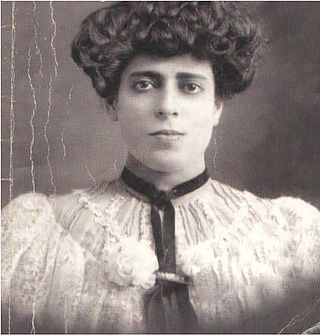
María Enriqueta Camarillo (1872–1968) was a Mexican poet-novelist, short story writer and translator. She was widely recognized for her works, with schools and libraries named after her, as well as a bust by Spanish sculptor Mariano Benlliure erected in Hidalgo Park in Mexico City in her honor. She received the 1923 literary prize from the Académie française for her novel El Secreto. She was awarded a collaborative partnership in 1927 with the Real Academia Hispano-Americana de Ciencias y Artes of Cádiz for her textbook Rosas de la Infancia. For the same work, she also received the prize for best children's literature from the Literary Salon of the Universal Exposition in Seville, Spain. Camarillo was granted the Order of Isabella the Catholic in 1947 and in 1948 received the Civil Order of Alfonso X, the Wise.
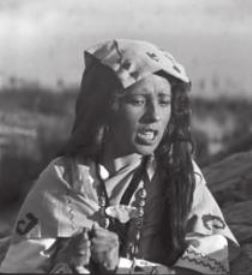
Ana Rosa Tornero (1907–1984) was a Bolivian writer, journalist, teacher, social reformer and a feminist. She published the first feminist magazine in Bolivia and was one of the founders of the first feminist organization in the country.
María Luisa Mendoza, also known as La China Mendoza, was a Mexican journalist, novelist and politician. She served as a federal delegate from the state of Guanajuato to the 53rd Mexican legislature.
References
- 1 2 Jason Borge (2008). Latin American writers and the rise of Hollywood cinema . Routledge. p. 55. ISBN 978-0-415-96478-4.
- ↑ "Confabulario, título que rinde homenaje a Juan José Arreola, a partir de mañana todos los sábados en las páginas de El Gran Diario de México". El Universal (Mexico City) . 24 April 2004.[ permanent dead link ]
- 1 2 3 4 5 Elliot Richard Heilman (2015). "The Public Faces of Estridentismo: Socializing Literary Practice in Postrevolutionary Mexico, 1921-1927" (PhD Thesis). ProQuest Dissertations & Theses. Retrieved 5 August 2015.
- ↑ Rubén Gallo (Summer 2006). "Mexican Radio Goes to the North Pole". Cabinet (22). Retrieved 2 June 2009.
- ↑ Rubén Gallo (2010). Freud's Mexico: Into the Wilds of Psychoanalysis. MIT Press. p. 14. ISBN 978-0-262-01442-7 . Retrieved 5 August 2015.
- ↑ Mahieux, Viviane (2021). Urban chroniclers in modern Latin America: the shared intimacy of everyday life. Joe R. and Teresa Lozano Long Series in Latin American and Latino Art and Culture. Austin: University of Texas Press. ISBN 978-0-292-73544-6.
- ↑ Kelly Arthur Garrett (8 January 2007). "Random Readings: Modern Mexico . . . and how it got that way". El Universal (Mexico City). Archived from the original on 28 August 2007. Retrieved 2 June 2009.
- Eladio Cortés (1992). Dictionary of Mexican literature . Westport, CT: Greenwood Press. ISBN 978-0-313-26271-5.